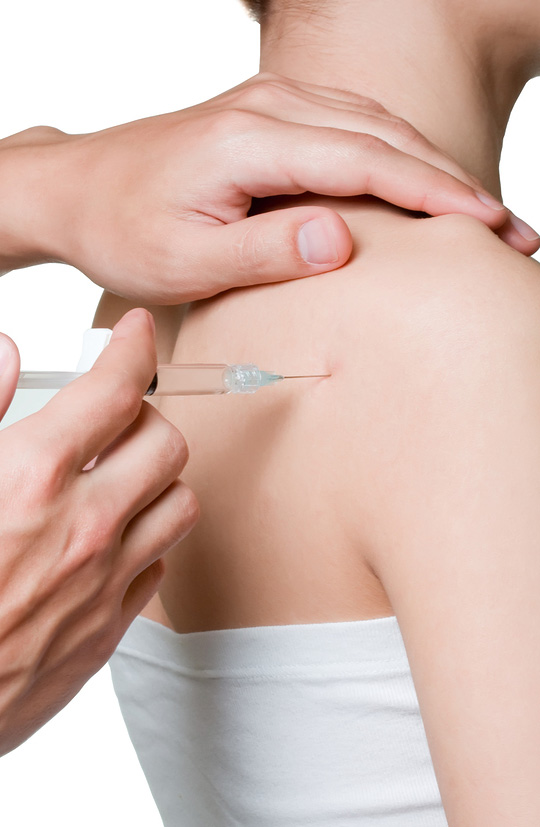All Referral Letters Accepted.
Bulk Billing Available(Conditions Apply)
Musculoskeletal injections are a safe and modern procedure which offers pain relief in areas such as the hip, wrist, knee, elbow or shoulder regions. These cortisone injections are typically considered when physiotherapy and oral medication have been tried and the pain is still prevalent.
Overview
These injections deliver powerful medications directly to the area that is the source of the pain, and as a result, are usually much more effective than tablets.
Preparing
The procedure technique will depend on the area being injected. Musculoskeletal injections can be performed using the CT scanner or ultrasound to guide the injection. You may be asked to change into a gown. The procedure may be performed while you are sitting or lying down and is generally very quick, taking less than 5 minutes for the actual injection.
Scanning
Under imaging guidance, our radiologist will inject the medication into the source of pain, as requested by your referring practitioner. The procedure may take up to 30 minutes, depending on the location of the injection, and your pain. The patient may be asked to wait for up to 30 minutes post-procedure.
Medications
With most musculoskeletal injections, a mixture of medications is injected. Local anaesthetic (numbing or freezing medication) is mixed with cortisone (a naturally occurring strong anti-inflammatory). This combination of drugs is injected into the area. The anaesthetic is a fast-acting drug, which will start working before you leave our practice. Thus, we will know if the area we have injected is the source of the pain. The local anaesthetic only lasts a few hours (up to 8 hours). Cortisone is long lasting and may not begin working for several (2-7) days following the injection, but the effects can last for months.
Post- Procedure
Depending on the type of injection you may not be able to drive home. It is best to check with reception when making your appointment. Patients may return to their normal activities the day after the procedure, including returning to work. Most patients will experience pain relief immediately after the procedure because of the anaesthetic. The anaesthetic will usually wear off within 8 hours and the pain often returns the evening of the procedure. The cortisone usually takes at least 2 days to begin working. Generally, it is best to ease back into exercise or more strenuous activities over 1 to 2 weeks as the medication begins to work. However you should also consult your doctor for specific advice to address your individual needs.Patients are asked to record the relief they experience after the procedure and keep a record of their pain relief during the next week on a post injection evaluation sheet. Comprehensive Medical Imaging suggests you return to your referring doctor 1-2 weeks following the injection.
FAQs
What is the risk of infection? If you have a local skin or systemic infection, a musculoskeletal injection may put you at greater risk for spreading the infection. Make sure to tell your doctor if you have any infected wounds, boils, or rashes anywhere on your body.
Can I have a musculoskeletal injection if I have other medical conditions?
Injections are usually an elective procedure offered to patients without life-threatening conditions. A medically unstable patient should have his or her medical condition treated before any elective injections are given.If you have an accompanying medical illness, you should discuss the risks of a musculoskeletal injection with your physician. For instance, patients with diabetes might experience an increase in blood sugar after an injection with cortisone. Patients with congestive heart failure, renal failure, hypertension, or a significant cardiac disease may have problems due to the effects of fluid retention several days after an injection.
How many injections will I need?
The number and frequency of injections is debatable, although it is generally considered reasonable to limit the number to three times per year to avoid systemic side effects of the cortisone. This is best discussed with your referring doctor.
What are the side effects of musculoskeletal injections?
Side effects are minimal and consist mainly of mild tenderness in the area of injection which disappears in 1-2 days. This treatment, along with analgesics and physical therapy, has brought relief to thousands of patients, avoiding, in the majority of cases, the need for surgery. Adverse reactions and serious complications are very rare.
What are the success rates of musculoskeletal injections?
Musculoskeletal injections are generally successful in providing temporary relief from pain for most patients who undergo the treatment. Pain relief experienced as a result from an injection procedure generally lasts between one month and one year.

